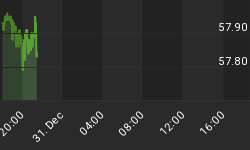In November, the euro could correct to 1.2750-1.2650. However, the medium-term trend stays bullish. The target of 1.44 is still in the cards.
U.S.: Will the tide change in 2013?
The good news is the US economy is improving. However, it is not moving fast enough to build up momentum in the labour market yet. The possible end of the financial crisis in the eurozone will probably help. In addition, the Federal Reserve will remain accommodative for some more time, as the GDP is growing only 2.0%, and Q3 should be extended. The ability of the new administration to resolve the so call "fiscal cliff" challenge should do the rest. In reality, the ISM composite index report confirmed the manufacturing sector is moving in the right direction. In October, it rose to 51.7 from 51.5. New orders climbed to 54.2, while production was strong at 52.4. Finally, consumer confidence rose to the highest level since 2008.
Employment remains weak, but is stabilizing for now. In October, 171,000 new jobs were created. As a result, the three months average was 170,000 from 67,000 in June. The private sector led the way and built 184,000 new positions supported by construction, manufacturing and services sectors. The household survey showed another victory with 410,000 employed on the top of the huge move of 873,000 in September. The unemployment rate ticked up to 7.9%, due to an increase of the participation rate, but remains below the critical level of 8%. However, wages were up 1.6% year to year in October and the increase is not good enough to balance the actual move in consumer prices.
Eurozone: Better shape than anticipated.
The EURUSD is still consolidating and could decline to 1.2750-1.2650 short-term. Incertitude over Spain`s decision to ask the E.U. for financial backing, as well as the coming results of the regional elections in Catalonia, are weighing on the euro. In addition, in the past, the month of November has been supportive for the US dollar. Nonetheless, the longer-term picture remains bullish for the European currency, as the worst of the financial crisis should be over for Europe.
Apparently, since January, EURUSD is building a massive head-and-shoulders formation. A move above 1.3470 could take the euro to 1.44. The yield premiums of Italian and Spanish bonds have declined boldly, since the ECB has declared the unlimited bond purchases policy. As the crisis is fading away, banks are asked by the ministries of finance to buy their own sovereign bonds. So, the ECB will probably have to buy less peripheral bonds than previously anticipated and the euro should continue the uptrend that started in July.
















